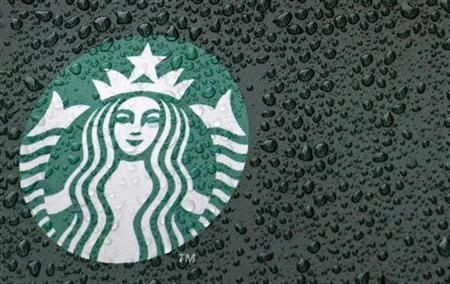Will Starbucks' New Deal With The New York Times Actually Help The Paper?
Who stands to benefit the most from the new partnership?

The New York Times Company (NYSE:NYT) on Wednesday announced a partnership with Starbucks (NASDAQ:SBUX) to offer its readers and curious caffeine guzzlers “enhanced access” to the paper’s website through the coffee company’s digital network.
The deal offers Starbucks customers access to 15 free Times articles per day through the Wi-Fi network in a given coffee shop. These articles, to be selected (or curated, if you will) by the paper, will consist of three articles apiece from the News, Business, Technology and Most Emailed sections, with the fifth section featuring rotating special sections of the daily print paper, according to the company's statement.
The Times already grants readers access to 10 free articles per month, and a Times spokesman told GigaOM that this increased access will not count against a reader's use of the existing paywall. Rather, the 15 articles offered daily through a given Starbucks location’s Wi-Fi will be offered in addition to the monthly limit.
What does the national “newspaper of record” stand to gain from this new deal with the world’s largest coffeehouse chain? In the company’s statement on Wednesday, Yasmin Namini, senior VP of marketing and circulation, said “Starbucks is the ideal setting for The Times to offer enhanced digital access,” but did not elaborate as to why that’s the case.
Considering the expansive global reach Starbucks offers, the Times may find it an attractive partner simply by dint of the sheer number of people it would be drawing in to preview its content (though the Times added the new “enhanced access” will on be “available only in U.S. company-operated stores that offer free AT&T Wi-Fi”). The deal may come across as an olive branch to frustrated readers unable to circumvent the website’s “metered paywall” as easily as they used to since the Times has begun to actually police its own loopholes for online access.
If curbing unfettered access to the website was its main goal, however, The New York Times already seems to be failing in this regard. NYClean, a popular workaround which has been around since the paywall was first erected in 2011, is still alive and well as of this writing. And media blogger Jim Romenesko -- who incidentally also runs a blog called “Starbucks Gossip,” which focuses exclusively on the coffee chain -- was already able to gain access to all of The New York Times' web content at Starbucks.
But say you’re too lazy, terrified of privacy violations or morally sanctified to deny financial support to The New York Times for producing high-quality journalism. Would using the new “enhanced access” make sense as a consumer -- assuming you’re not already subscribing to some version of the Times for the above reasons?
As an experiment of sorts, I walked over the Starbucks just a few steps away from the IBTimes' office down in the Financial District -- this is New York City, after all, where it often feels like there are more Starbucks locations than people. Today's print edition of The New York Times costs $2. The cheapest cup of coffee I could find was $1.85. The cheapest food item was a $1.50 cake pop, but I’m not sure that fits under the purview of acceptable items to munch on while reading the news.
Math shows it only costs an extra 15 cents to get unlimited access -- or the same content as the “enhanced” Starbucks version of the New York Times, plus a ton of other articles that you can read on your own time, and even -- dare I say it -- access outside of the borders of Starbucks Wi-Fi (gasp).
I’m not a behavioral economist, but the value added here seems to fall squarely on Starbucks, which now boasts augmented customer service by offering a sample of The New York Times, widely recognized as one of the best newspapers in the world. The new deal may help the Times in some ephemeral way more than it does Starbucks -- say, by helping expand its readership or build awareness for its brand. But if finding the most cost-effective way to read the news is my main goal, I’d rather splurge the extra 15 cents on a hard copy of the paper and find some coffee that’s isn’t quite so overpriced.
Then again, I guess if it really was that simple, print publications wouldn’t be turning into an endangered species.
© Copyright IBTimes 2024. All rights reserved.






















